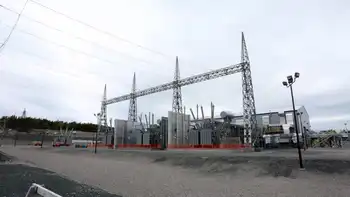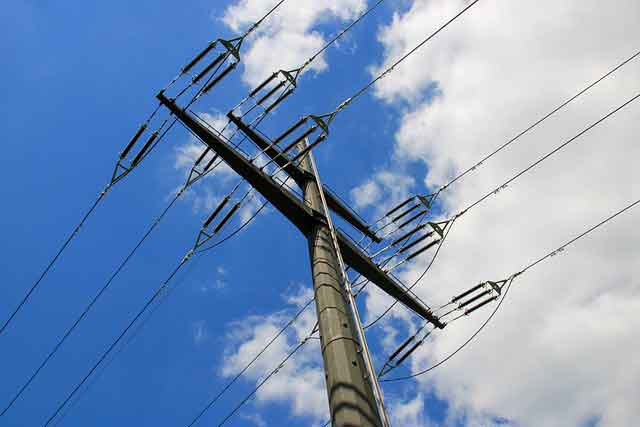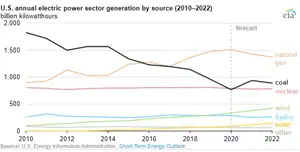The top 10 facts about zapping trash with plasma
By Discovery Channel
High Voltage Maintenance Training Online
Our customized live online or in‑person group training can be delivered to your staff at your location.

- Live Online
- 12 hours Instructor-led
- Group Training Available
But initial plans in Florida to build the largest plasma arc gasification plant in the world have been scaled back by about 80 percent. And in Sacramento, the proposed plant has been put on hold because of a lack of details about just how much electricity would be produced and how much trash would be gasified by plasma.
But why were folks looking into plasma in the first place? Expert Louis Circeo gives a list of his top 10 reasons for zapping garbage with plasma.
1. It reduces the need for landfills.
Sometimes called "artificial lightning," plasma can have temperatures that can exceed 7,000 degrees centigrade — that's three times hotter than fossil fuels and hotter than the surface of the sun. The plasma arc would instantly convert organic materials into synthetic gas, often called "syngas," and melt inorganic materials, which when cooled, become rock-like and can be sold as construction materials. With no remaining waste to deal with, landfills become obsolete.
2. Existing landfills could be mined for energy.
In many regions of the United States, it would be more cost-effective to take municipal solid waste to a plasma gasification plant for energy production than to dump it in a landfill. When plasma gasification is fully developed, even existing landfills could be economically mined for energy production, environmental cleanup and land reuse.
3. It's energy efficient.
Plasma gasification of 1 ton of average municipal solid wastes would send about 815 Kilowatt-hours of electricity to the grid. This is 20 to 50 percent more electricity to the grid than any other emerging thermal waste-to-energy technology. In addition, this amount of power is over six times the electricity required to conduct the plasma gasification process.
4. It's working in other countries.
Since 2002, two commercial waste-to-energy plasma gasification plants have been operating successfully in Japan. The Mihama-Mikata facility processes 24 tons of municipal sold waste and 4 tons of sewage sludge per day, producing steam and hot water for local use. The Utashinai plant processes up to 300 tons per day of waste and/or automobile shredder residue. This facility produces up to 7.9 Megawatts of electricity, of which 3.6 MW are used to run the plasma torches and the plant, and up to 4.3 MW are sent to the electrical power grid. In Ottawa, Canada, people are evaluating a demonstration facility that is currently processing 94 tons of waste per day, sending 4 MW of power to the grid.
5. It could produce ethanol fuel.
If all the municipal solid waste in the United States was processed by plasma gasification, over 5 percent of the U.S. electrical energy requirements could be produced. This amount of power is equal to the amount of hydropower produced in the United States, or equal to about 25 nuclear power plants. Similarly, the 2007 U.S. Energy Act recommends that "garbage" be used to replace edible foods such as corn to produce ethanol. It was estimated that waste could produce up to 30 percent of the 36 billion gallons of ethanol required by the year 2022.
6. It could produce the most renewable energy.
Plasma processing of municipal solid waste in the United States has the potential to create more renewable energy than the projected energy from solar, wind, landfill gas and geothermal energies combined.
7. It's clean burning.
Because of the high temperatures, the low volume of gas emissions and the dissociation of organic compounds, gaseous emissions from plasma waste processes are much cleaner than from other kinds of gasification or incineration processes.
8. It reduces greenhouse gas emissions.
In landfills, garbage produces methane, a greenhouse gas. But if that garbage were sent to a plasma gasification facility, it would not have a chance to produce methane. What's more, the energy generated could replace energy made at a coal-fired plant. In fact, for every ton of municipal solid waste sent to a plasma gasification facility for power production, 2 tons of CO2 emissions could be reduced from the atmosphere.
9. It gasifies more than garbage.
At least 15 companies in the United States and Canada are actively developing plasma gasification projects. In addition to municipal solid waste, the plants will process industrial waste, biomass, coal, coke and other carbonaceous materials. The plants will produce electricity as well as ethanol, methanol, diesel fuel, hydrogen and other syngas-based fuel products. Construction on some of these facilities is expected to begin in 2009.
10. It has a future.
Plasma gasification could play even more important roles in the fields of clean coal gasification, secondary oil recovery, and oil shale and tar sands recovery processes. Truly. Plasma gasification is an incipient environmental blockbuster, ready to leap ahead of current concepts of waste disposal, energy production and environmental cleanup.











